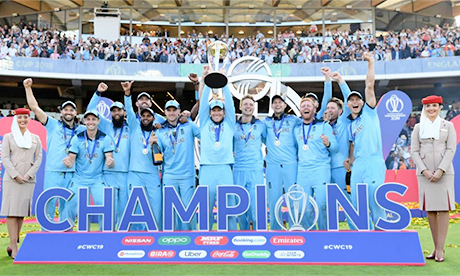As we took the field to defend 15 in the super over in the World Cup final last summer, Jos Buttler told me he hoped I had a couple of shamrocks in my pocket.
I laughed, and turned to Adil Rashid: “Allah’s with us, isn’t he?”
Rash agreed he was.
Later, at the end of a crazy day, I mentioned that comment in the post-match press conference, because it seemed to sum up the kind of team we had become: a team of different backgrounds, races and religions, a team which derived strength from diversity, and represented the best of our country.
That’s right: our country.
I’ve lived in London longer than in Ireland.
It’s my home, and has been for a long time – longer than many realise.
And the fact that I’ve experienced so many cultures here makes me feel as if England’s World Cup winners stand for us all.
Last summer, that feeling mattered as much as ever.
Until the 2016 EU referendum, most of us probably thought life in the UK was pretty harmonious.
Since then, it’s become completely divided, which is sad.
But sport, I think, generally gets it right, because it is driven by a common goal.
Most of the time, people are committed to that, and so they have to be honest with each other.
In sport, you can’t get away with lies – at least not for long.
It’s more important than it’s ever been that the national side epitomise the culture we live in.
In that final, Jason Roy (born in South Africa), Ben Stokes (New Zealand), Jofra Archer (Barbados) and I all started life somewhere else.
Rash is Muslim, and so is Moeen Ali, who didn’t play at Lord’s but was an important part of the squad.
Let’s be honest: the England team have never really been made up of 11 white Christians, anyway; these days more people seem comfortable about that.
Attitudes have changed even during my time.
When I first played for England in 2009, I remember being told by someone that, with all the money that goes into the county academies, the cost of producing a home-grown player like Stuart Broad, who has gone through the system, was about £6m – that’s the rough figure you reach, in other words, if you divide the money that goes into the academies by the number of England players the system produces.
The implication was that the figure was higher than it would have been had the national side been made up of 11 born-and-bred Englishmen.
For a while, there was a stigma about being born abroad and playing cricket for England, especially when there was an influx of South African guys coming here to make a living.
When I started out, we had Kevin Pietersen and Jonathan Trott, as well as players who were born in South Africa but bred in England, like Andrew Strauss and Matt Prior.
English cricket didn’t fully embrace the influx – and that was the biggest mistake it could have made.
That kind of attitude just creates a bigger divide between the players and their public.
I was struck during the World Cup by the different ethnicities who turned up to cheer us on.
I never thought, for example, that we’d have so many England-based Indian fans supporting us but, when you look at the footage from the tournament, you can see how many were wearing England shirts.
It was amazing, and a change for the better. Continue reading
